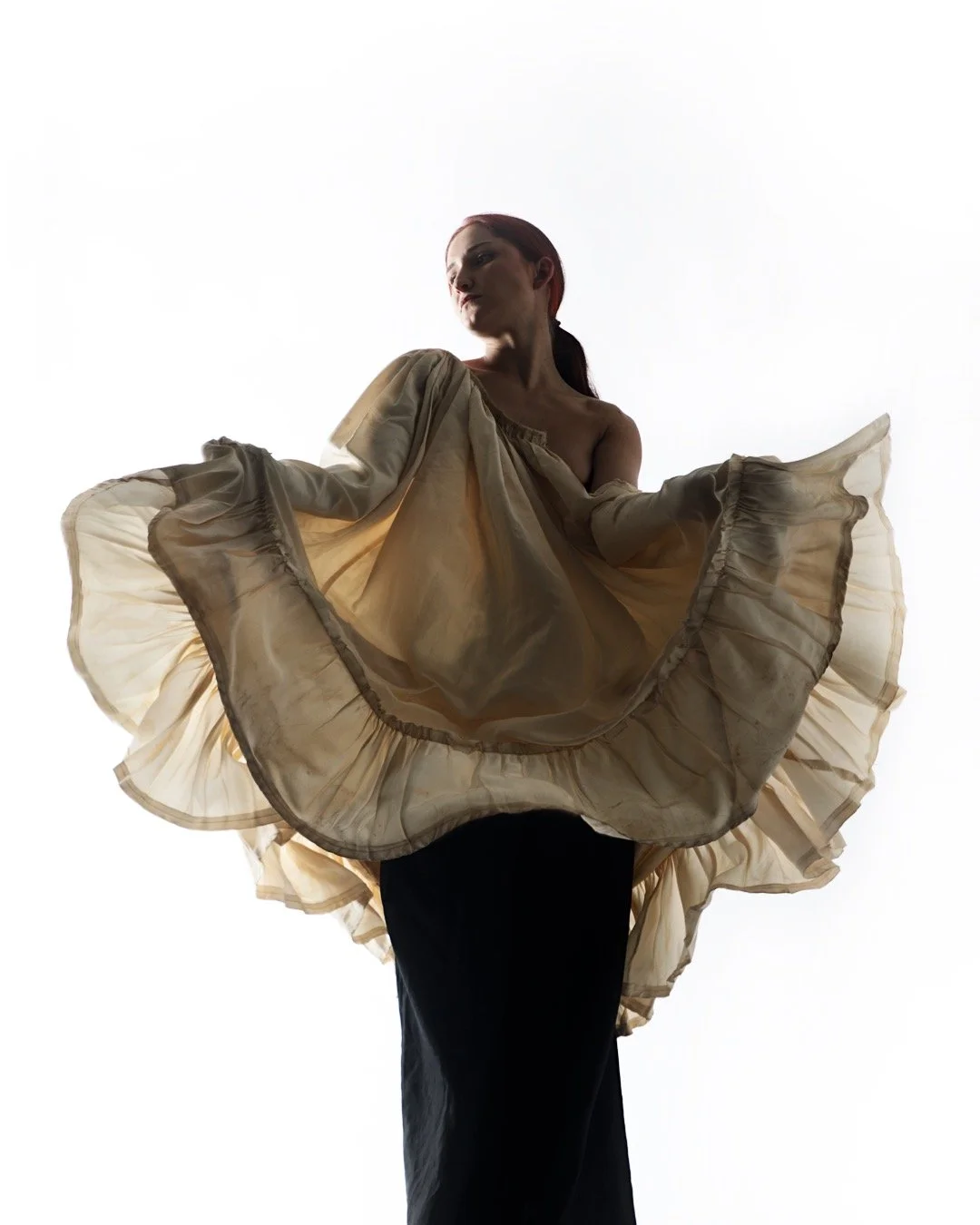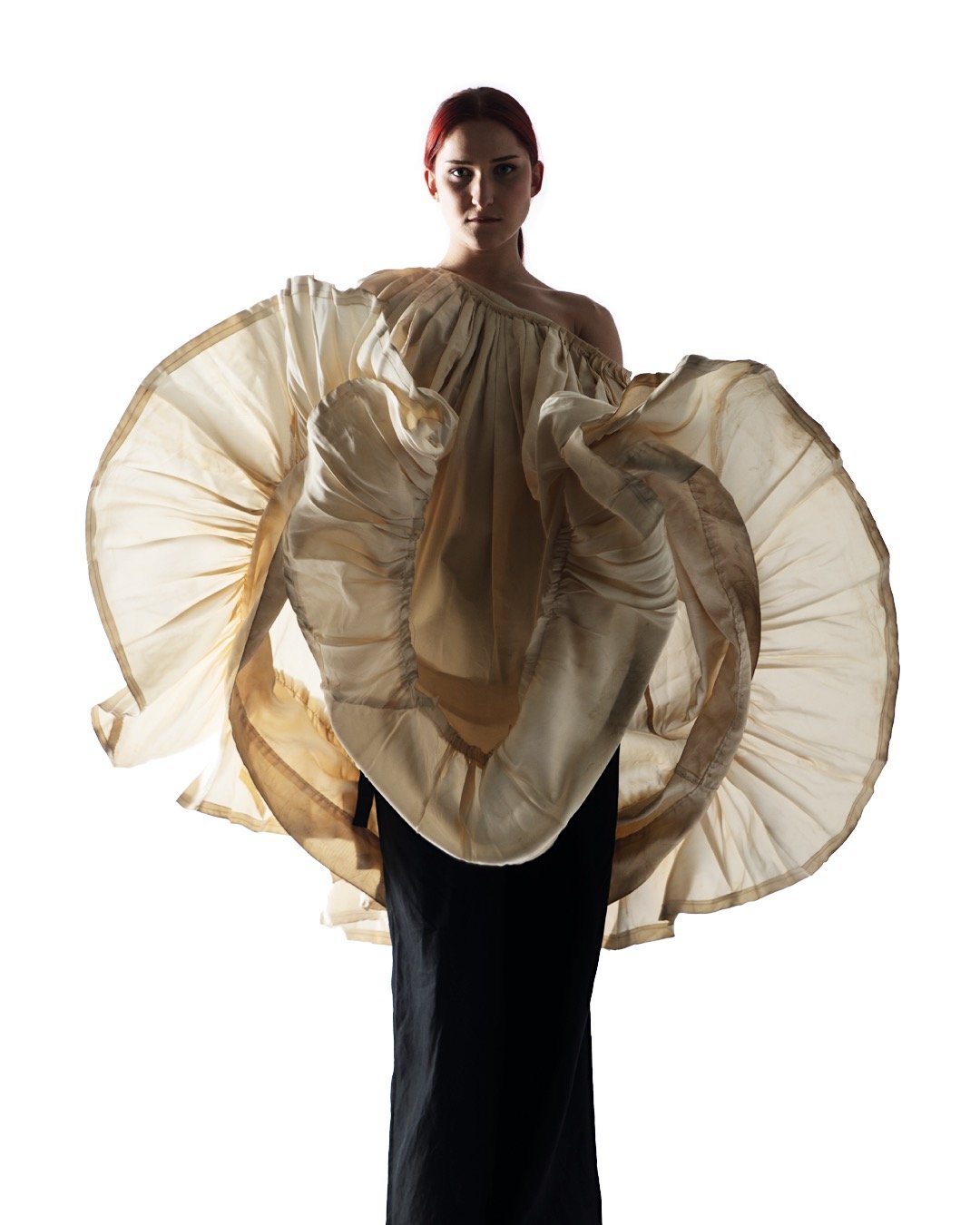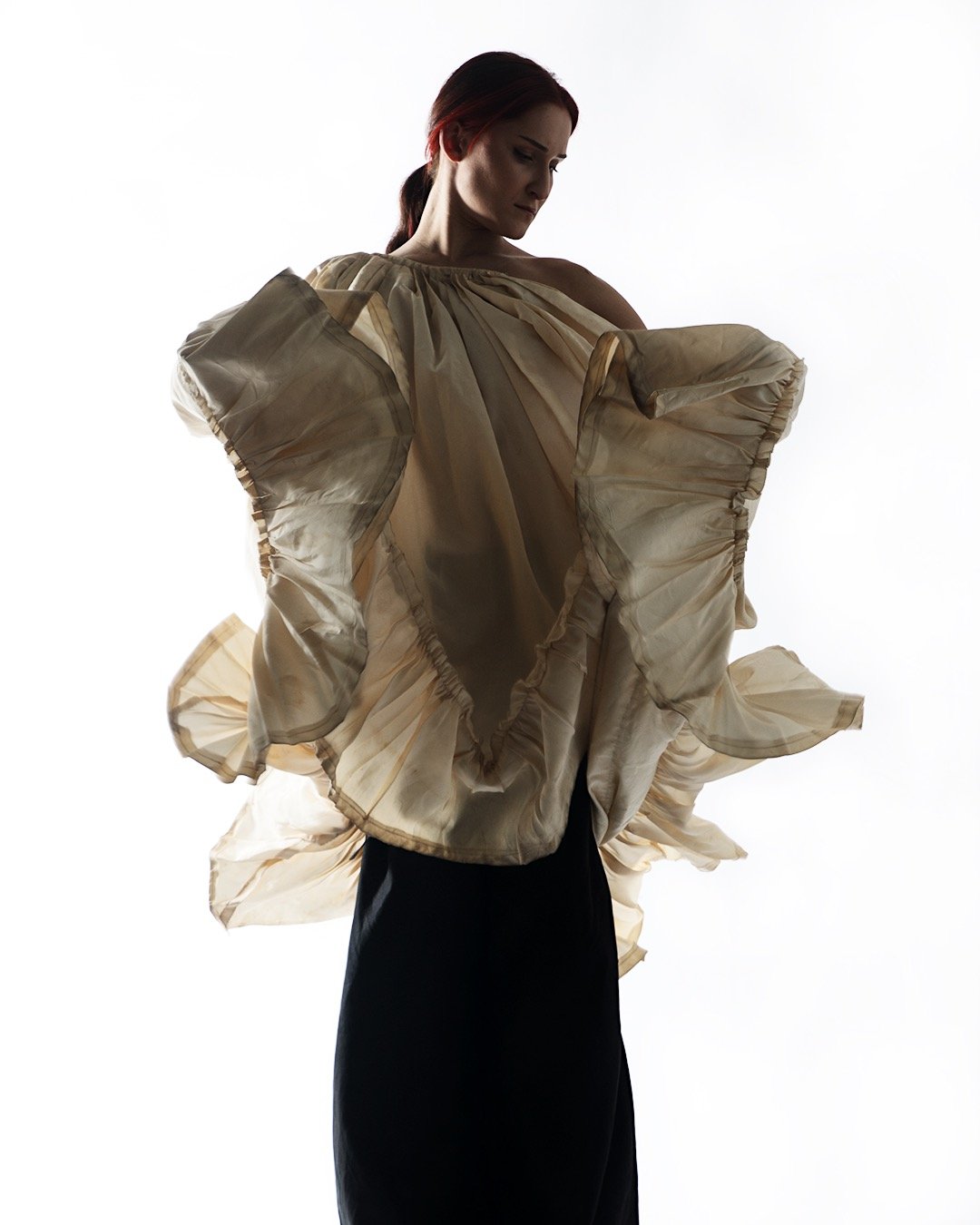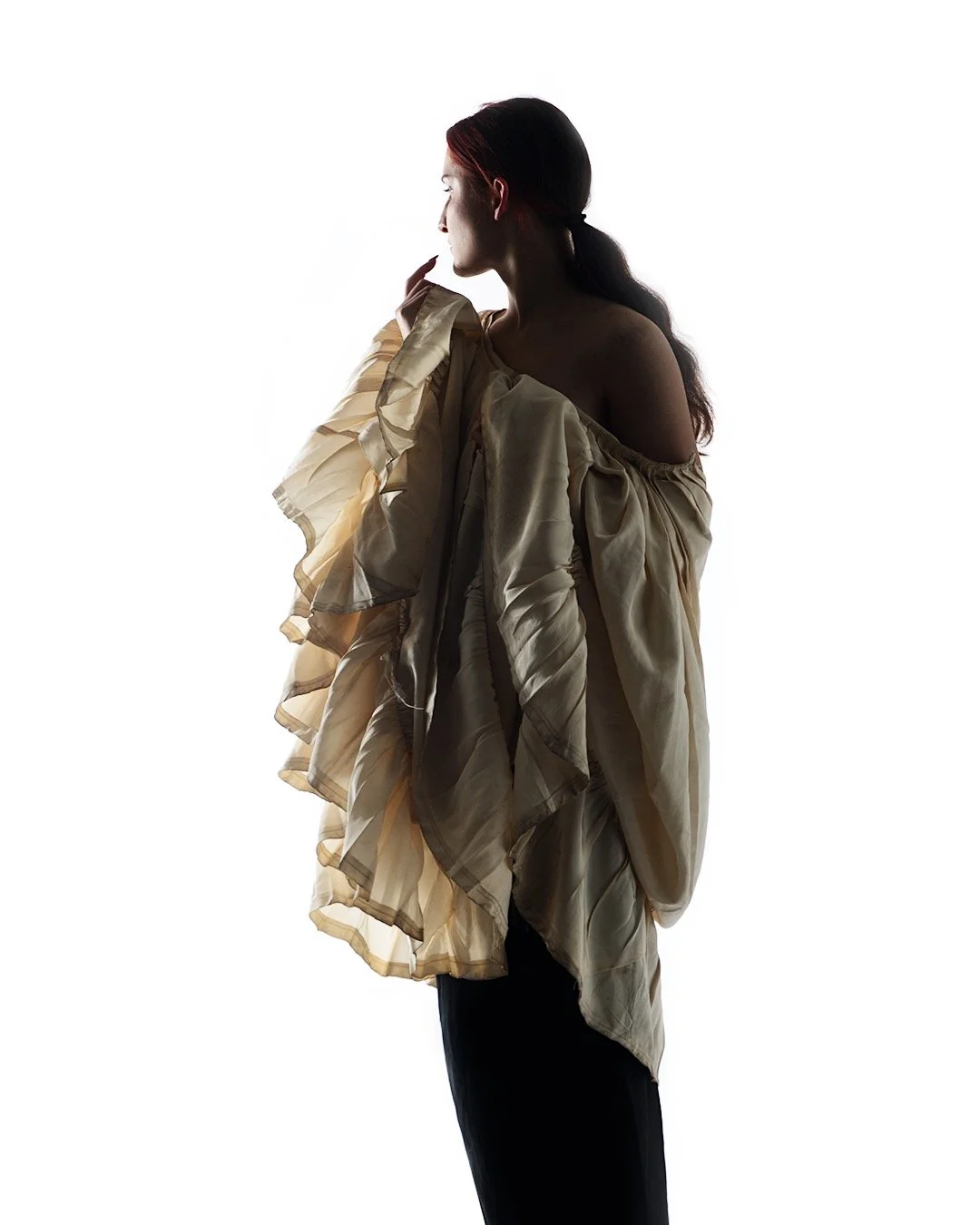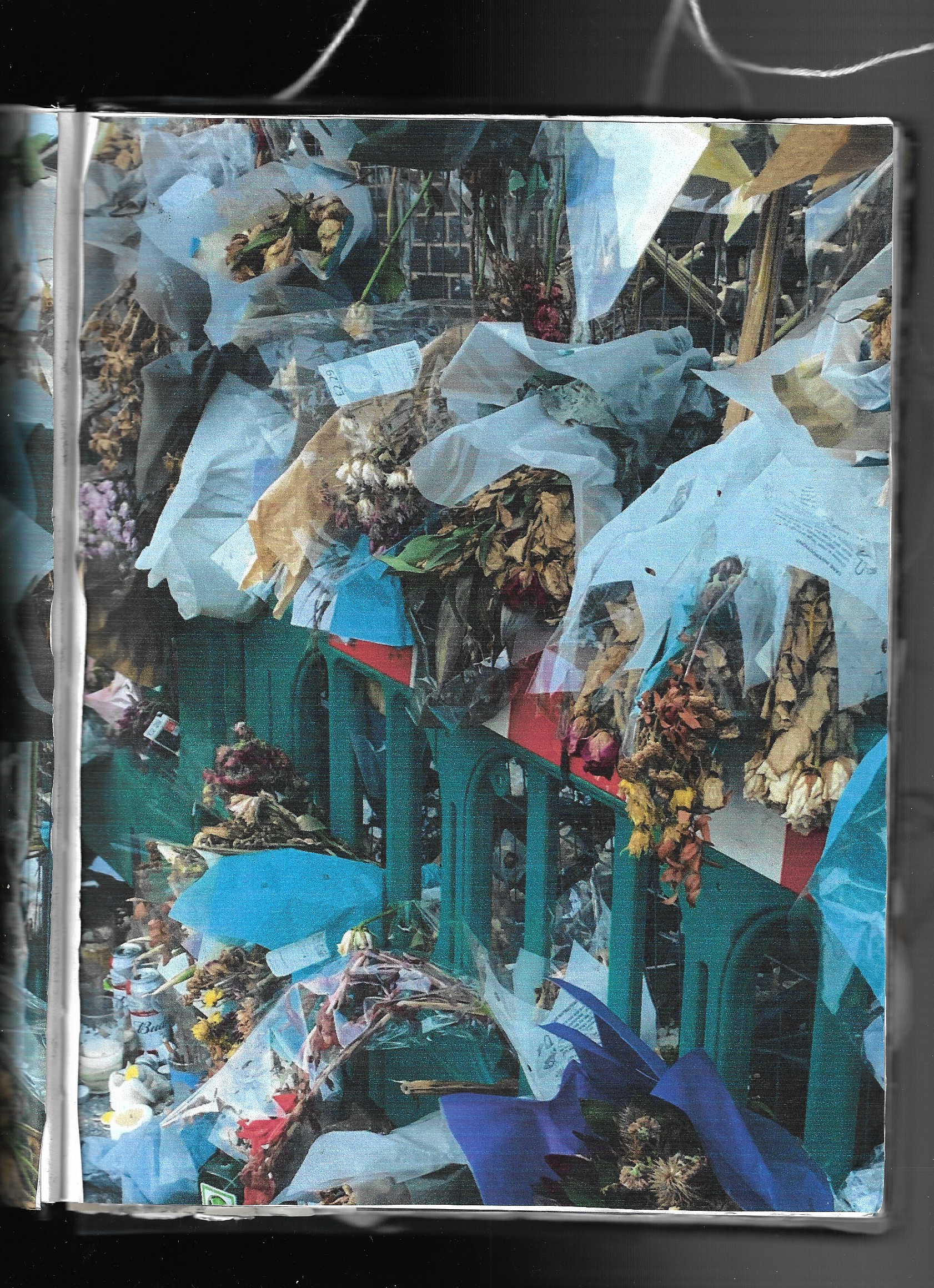
A Cure for Sorrow
“The pieces in this collection allow the wearer to escape within themselves, be succumbed by the regenerated materials, comforted by their surroundings, allowing their personal space to be the catalyst for their recovery.”
The individual and collective experiences of humanity are what create the complex and convoluted modern world we find ourselves operating within. Regardless of our place in society, there are core emotions and situations we all experience that connect us within individual cultures. I am categorising these experiences into three stages of human existence: birth, life and death. All are intertwined. However, the impact and ritualism associated with death are something I have found myself particularly enamoured by. The collection highlights the importance of personal experience and emotion, looking in depth at the way we as a society have attempted to institutionalise and preside over human grief and mourning. I found this most prominent in western society, where the process surrounding death is mostly seen as something deeply revered and removed from life, respected as something other, seemingly beyond the understanding of those left behind. This mystique is, of course, perpetuated by religious institutions, specifically the catholic church. In regards to the societal relevance of these principles, I found itimportant to do further analysis on the concept of sectionalism. Not just its religious connotation but also as a broader way of conducting human affairs and behaviour based on the ideologies and principles of the governing bodies.
When looking into how mourning and grief appears within my immediate community, I reflected on a memorial on the side of the road I had seen recently. Filled with flowers and letters of grieving family and friends, what could have been a macabre yet beautiful scene of life and joy, had instead been left neglected and allowed to decay. A sea of wrinkled and distorted flowers, in a haunting arrangement of beige, browns, whites and dull pinks. Something that was once intended to represent the memory and life left after death, has now succumbed itself to the factuality of the same process it aimed to contrast. This display of grief and mourning led me to reflect on the immediate human reaction to follow the processes of death and funeral etiquette, such as putting out flowers or wearing all black, as a means to mask ones true capability of dealing with something so monumental as the death of a loved one. As humans, we should not simply follow one formula for how we conduct our lives, how we choose to mourn, to love, to celebrate should be an incredibly personal and intimate act, as opposed to something historically established based off patriarchal and in most cases religious values, which is not a true or accurate representation of how modern humanity functions.
Along side these concepts, I wanted to reflect on what people around me have used in order to cope with the process of mourning, identifying the natural, immediate human reaction when dealing with loss, away from the critique and stigma built up through societal standard. In my experience, people crave comfort over all else when dealing with grief. The colours and silhouettes that build up this collection originate from the physicality of my observations and represent the more abstract concept associated with the process of decay, such as the contrast between descent into and ascent from the mourning process. By reclaiming heavy duvets, curtains and bed sheets, I was able to replicate and materialise this abstract concept into something tangible. The pieces in this collection allow the wearer to escape within themselves, be succumbed by the materials, comforted by their surroundings, allowing their personal space to be the catalyst for their recovery.

Final Outcome: Green Robe (regenerated curtains), Floral Top (regenerated sheets, pillow cases and curtains), Pleated Maxi Skirt
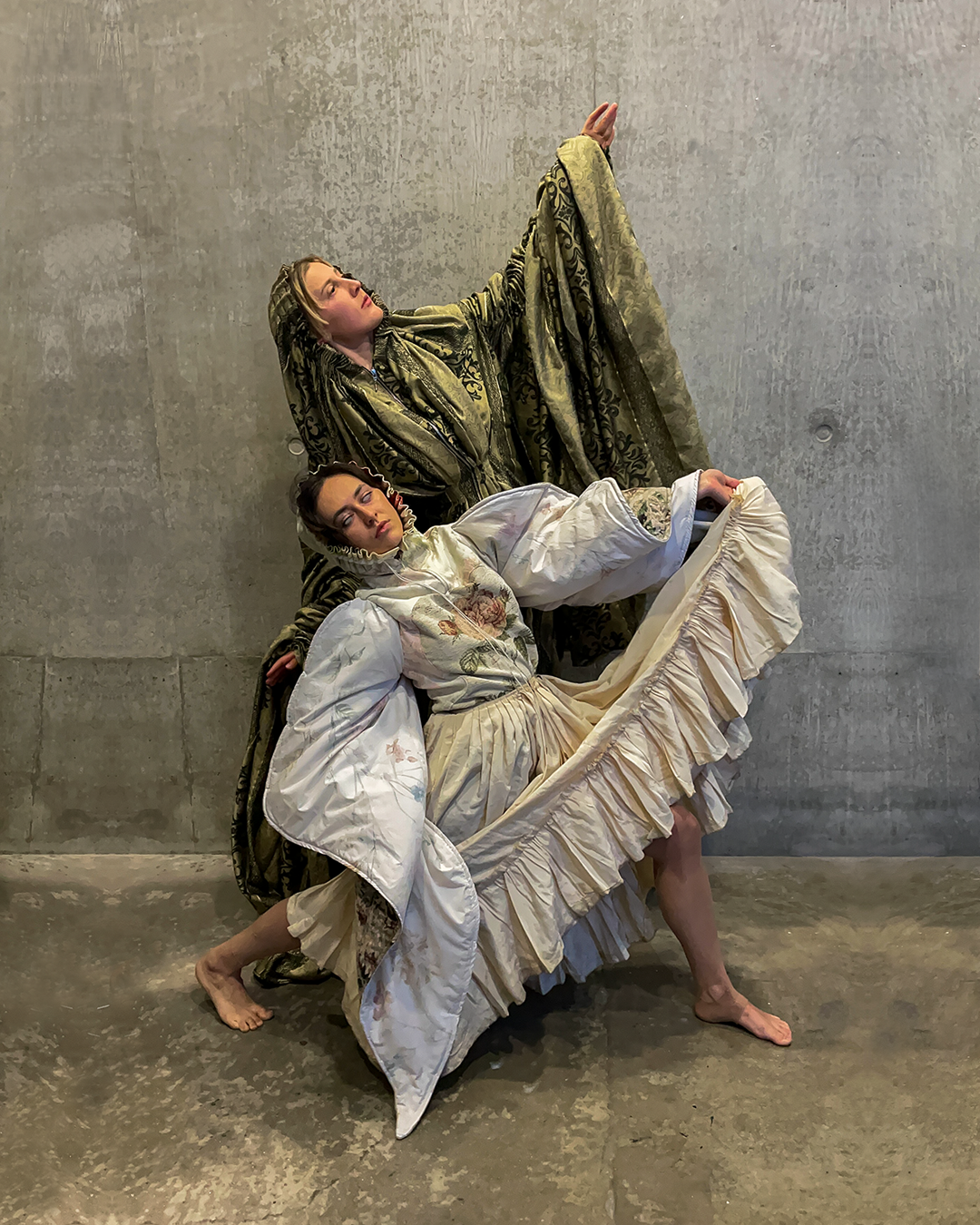
Final Outcome: Green Robe (regenerated curtains), Floral Top (regenerated sheets, pillow cases and curtains), Pleated Maxi Skirt

Final Outcome: Green Robe (regenerated curtains)

Final Outcome: Floral Top (regenerated sheets, pillow cases and curtains), Pleated Maxi Skirt

Final Outcome: Floral Top (regenerated sheets, pillow cases and curtains), Pleated Maxi Skirt
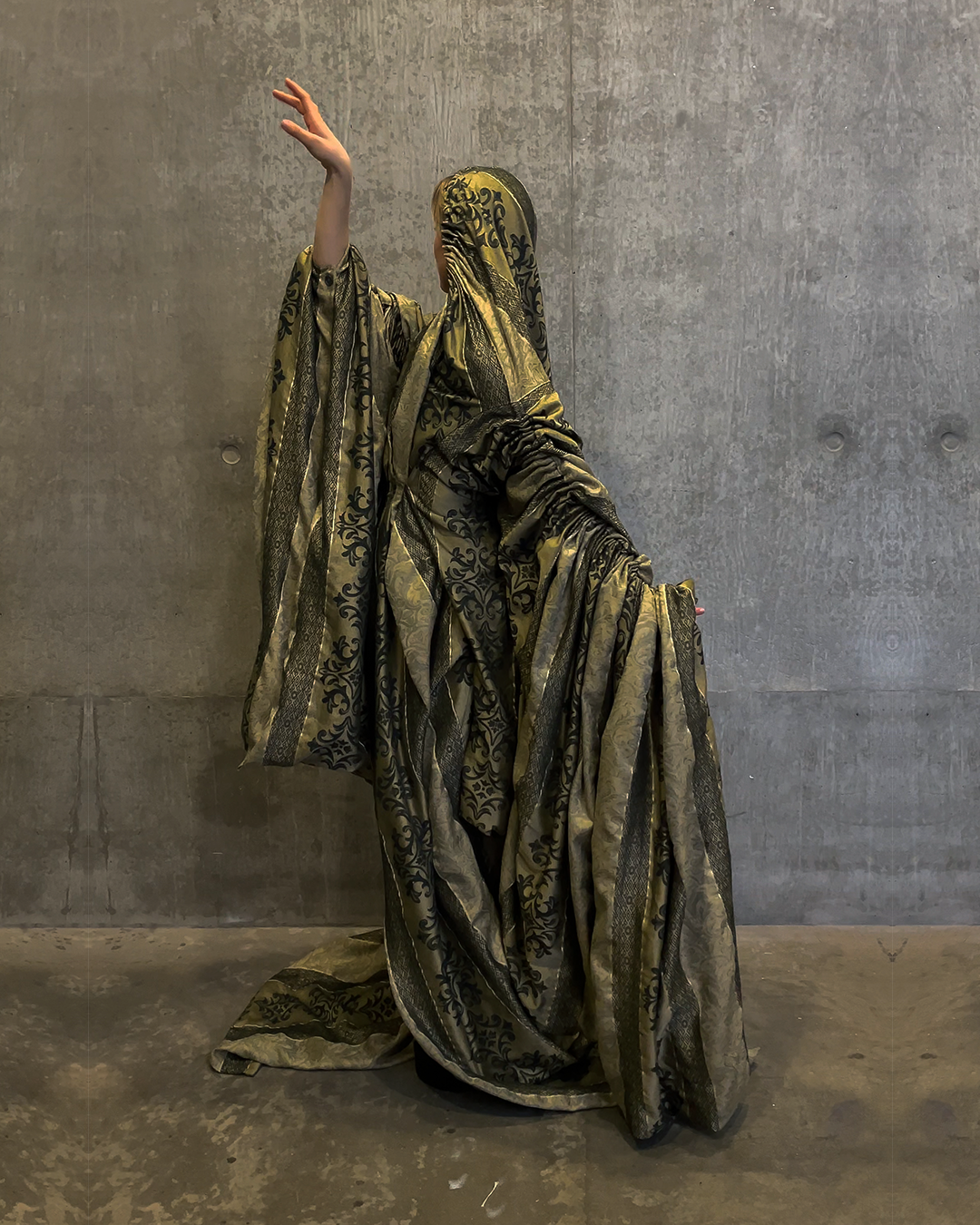
Final Outcome: Green Robe (regenerated curtains)
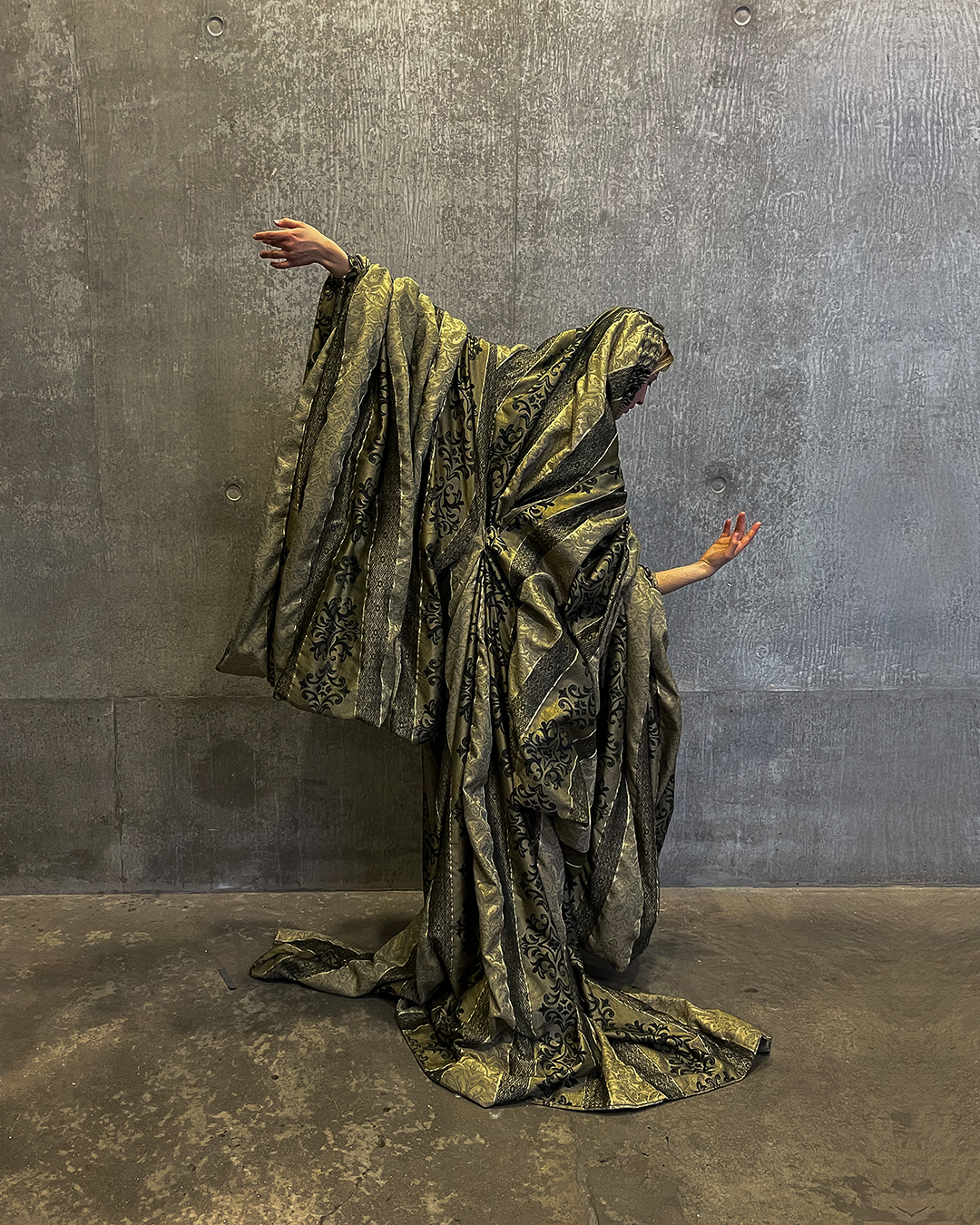
Final Outcome: Green Robe (regenerated curtains)
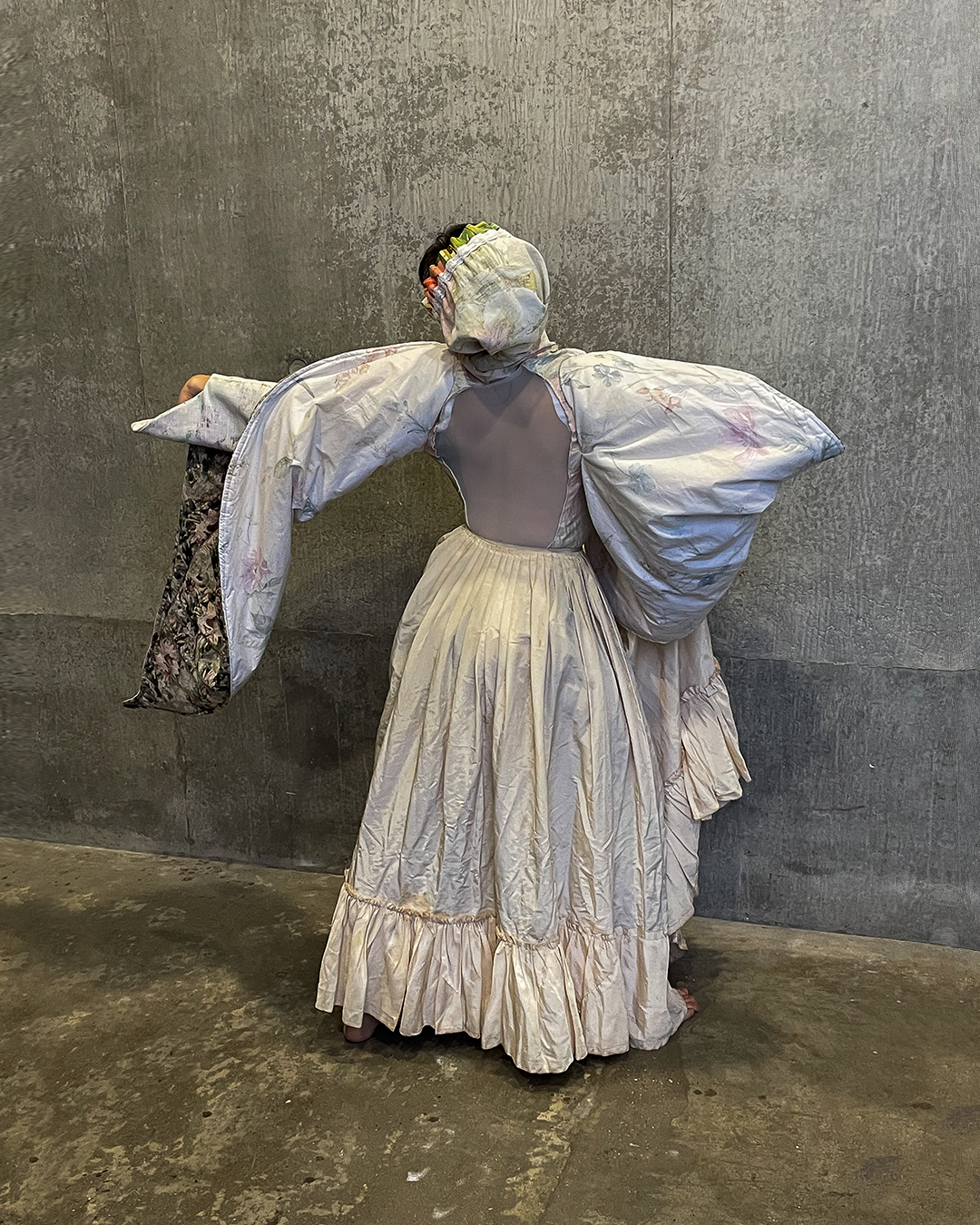
Final Outcome: Floral Top (regenerated sheets, pillow cases and curtains), Pleated Maxi Skirt
A Cure for Sorrow - Fashion Film
After the death of their brother, this film follows two sisters as they come to terms with death and the revereance of grief. Existing within the same space, they must both simultaneously grapple with their individualistic approaches to mourning, while still retaining their own fragile bonds. Frozen in a continuous state of dysphoria, each of their coping mechanisms, spurred on by their pre-existing ideals, becomes increasingly divisive as time progresses.
Brocade Coat (Regenerated Curtains)
Floral Top with Puffer Sleeves (Regenerated Mixed Floral Sheets)
Pleated off shoulder Poncho (Cream up-cycled)
Concept & Design Development
“Inspired by the concept of Sectionalism and the performative institutionalisation of death, this project references historical funeral wear as well as reflecting on the process of decay evident in florals. The collection utilises the emotion of grief associated with death and loss as a basis for developing loose and padded forms, encompassing the figure in a state of comfort.”
Inspired by the institutionalisation of death and the performative nature of funeral wear in the west, also looking at white funeral flowers as a motif of tradition surrounding mourning and grief.
Analysing the emotion of grief and personal relationship with death in my immediate surroundings, idea of pulling back the veil of sorrow and performative mourning to reveal one's true relationship with death free of societies evaluation.
Developing concepts of comfort and individual experience with grief, idea of hiding away, Turing inward and using external comfort as a means of adapting internal dialogues.
Inspired by the natural decay of florals for silhouette, colour story and fabrics. What ones was used as a symbol of life and memory after death has now itself succumbed to the inevitability of time, and as a result, death.
Translating the ostentatious and macabre display of grief within funeral culture in the west, through elaborate and grandiose form. complimented with the soft flow of the decaying floral motifs
Working with padding and reclaimed bedding as a means of translating the idea of external comfort as a means of reconciling with the intimacy of death and grief.
Collection Range Plan & Technical File
“Presented as a capsule collection for Parisian brand “Marine Serre”, the collection aims to target house codes and values of familiarity, societal commentary and the utilisation of reclaimed materials, something I too value and strive to translate within my work consistently.”
Technical File (Padded Brocade Dress with Removable Hood)
Zip up, Dress, Dress, Trousers, Heels, Skirt
Zip up, Dress, Dress, Trousers, Heels, Skirt
Body suit, Dress, Skirt, Skirt, Off shoulder Top, Coat
Body suit, Dress, Skirt, Skirt, Off shoulder Top, Coat
Boots, Skirt, Compression Hood, Sandals, Poncho, Poncho, Top, Dress
Boots, Skirt, Compression Hood, Sandals, Poncho, Poncho, Top, Dress





